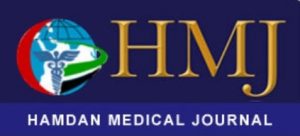Rosen HR, Hussain A, Lechner M, Enserer C
Hamdan Medical Journal 2012; 5:57-62.
AIM:
Transoral fundoplication has been repeatedly shown to be effective in selected patients suffering from gastro-oesophageal reflux disease (GERD) refractory to conservative treatment. In this series the safety and efficacy of this approach was evaluated in a group of patients suffering from recurrent reflux problems following previous surgical antireflux treatment.
PATIENTS AND METHODS:
From February 2009 to December 2011, 15 patients with a median age of 46.3 years (range 32– 68 years) underwent transoral fundoplication at three centres. After a median of 54 months (15–122 months) following their primary surgery, all patients were on continuous medication for GERD symptoms. Transoral fundoplication was performed using the EsophyX® or Plicator™ device. The scoring of symptoms, as well as the impact on quality of life (QOL), was evaluated with the GERD health-related quality of life (GERD-HRQL) questionnaire for typical GERD symptoms, the SF-36 questionnaire for general health status as well as the GERD Symptom Score.
RESULTS:
The median duration of the procedure was 42 min (range 30–70min), and all patients could be discharged on the following day. The mean GERD-HRQL score at baseline during continuous proton pump inhibitor (PPI) medication was 13.4 (±2.1) and showed a statistically significant decrease to 5.7 (±1.3) at 12 months’ follow-up (P < 0.001). In accordance with this, SF-36 evaluation showed a significant improvement in physical status at12 months’ follow-up (mean value of 50 ± 7.8 at baseline vs. 53 ± 5.2 at 12months’ follow-up; P < 0.001). Additionally, symptom scoring improved significantly in all parameters. Twelve (80%) patients were completely off GERD medication at the last follow-up.
CONCLUSION:
In this small group of patients with recurrent GERD following previous surgical treatment, transoral fundoplication has shown to be an effective tool to reduce symptoms and to improve QOL without the need for redo surgery, which is associated with an increased risk of morbidity.


